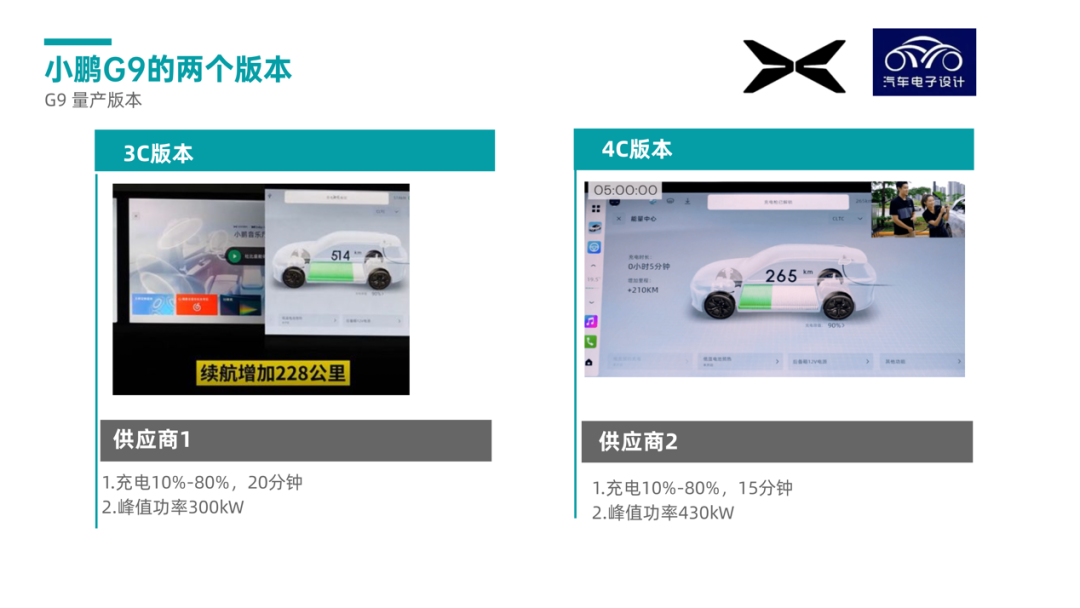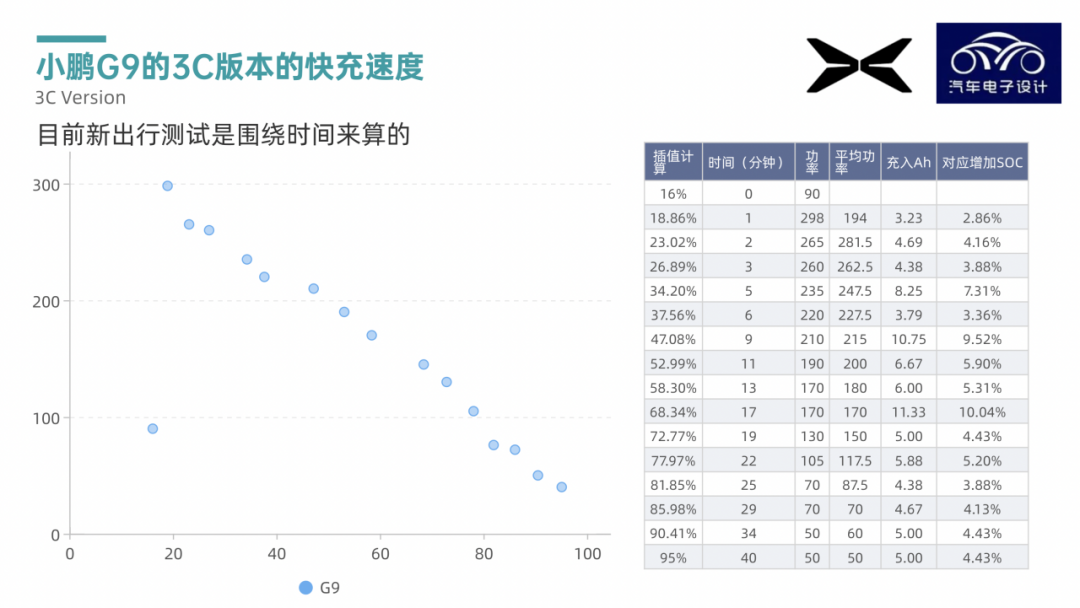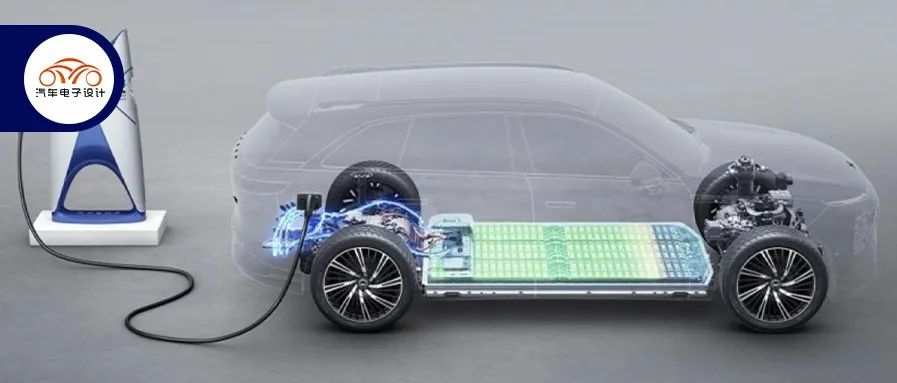Author: Zhu Yulong
Today, the data about the official release of XiaoPeng G9 has been unveiled. I find some of the information very interesting, especially the 3C version, which has been tested by “New Mobility.” Let’s discuss this data. According to the information disclosed online, G9 mainly has two fast charging versions, and the entry-level version of the lithium iron phosphate has an unknown charging speed.
-
4C Model: peak charging power can reach about 430kW; it can be charged in 5 minutes, increase the range by more than 200 kilometers and charge from 10% to 80% in less than 15 minutes.
-
3C Model: peak charging power can reach about 300kW; it can be charged in 5 minutes (the fast charging power is above 235kW), increase the range by more than 130 kilometers and charge from 10% to 80% in just 20 minutes.
What we saw this time was the 3C version produced in batches and tested by “New Mobility.” The model exhibited in the previous XPeng press conference was the 4C model.

Calculation of fast charging speed
Since the entire charging time and power curve are available, as shown in the figure below, during this test, it took 40 minutes to charge from 16% to about 95%. This data comes from actual testing and the peak power is not so high when charging on the Maixisu charging station in reality.

We can consider how many Ah are charged according to the average power per minute during this time interval, and then calculate the SOC before conversion. The chart below can be obtained. The approximate conclusion is:
-
The highest fast charging power for 20% SOC is about 300kW, which is instantaneous at 3C.
-
20%-30%, above 250kW.
-
30%-40%, probably above 200kW.

If we compare the data of G9 and Tesla’s Super Charging V3, the two batteries have capacities of 98kWh and 81kWh respectively. At present, in the low SOC range, due to Tesla’s special heating mechanism, the entire fast charging power and rate are slightly better than G9; while after 50%, G9’s 3C version is slightly better, but not by much.

This data requires fast charging stations to support it. Therefore, in the third quarter of this year, XPeng Motors will begin to deploy S4 super fast charging equipment in the top ten cities for G9 orders, including Beijing, Shanghai, Guangzhou, and Shenzhen. By the end of September of this year, a batch of S4 stations will be put into operation in core cities throughout the country. By the end of 2022, more than 50 S4 super fast charging stations will be put into operation nationwide. Next year, XPeng plans to complete the S4 station ultra-fast charging network coverage in key cities and core high-speed corridors across the country. By 2025, it is expected to build 2,000 XPeng super fast charging stations.
Discussion on 800V Fast Charging Design
According to the information provided by XPeng Motors, the battery system of G9 is divided into six large modules, each of which consists of 30 battery cells in series. At the battery cell level, the anode uses 6 series high voltage single crystal ternary materials, and uses fast charging-specific diaphragms and graphite negative electrodes, which increase the rate of lithium ion shuttle and insertion.
Note: The volume yield and CTP3, blade of this design can be compared in detail.

Summary: From what I have seen so far, this fast charging speed may be compared with Avita, and the level of the two companies may be similar. There is no big surprise in the 3C version of fast charging yet; let’s wait for the 4C version to be released.
This article is a translation by ChatGPT of a Chinese report from 42HOW. If you have any questions about it, please email bd@42how.com.
